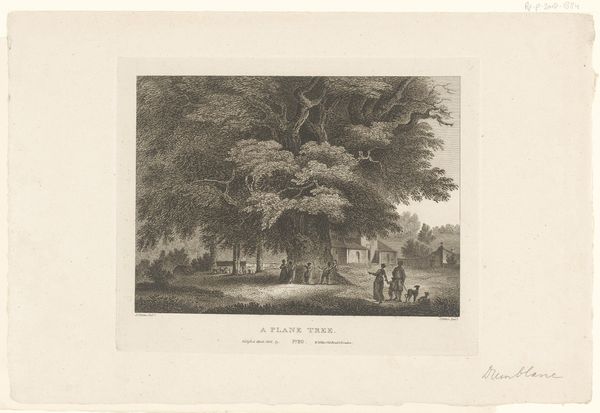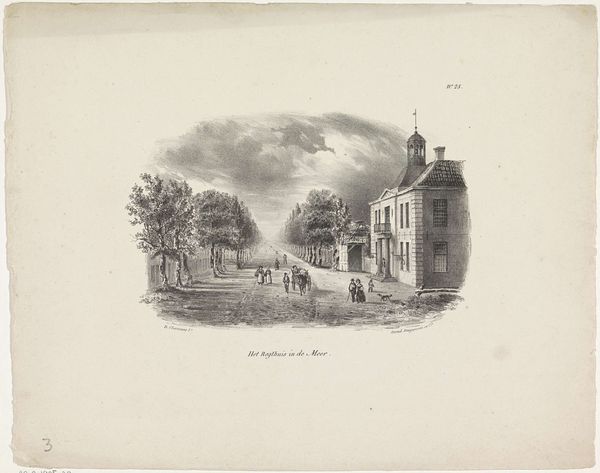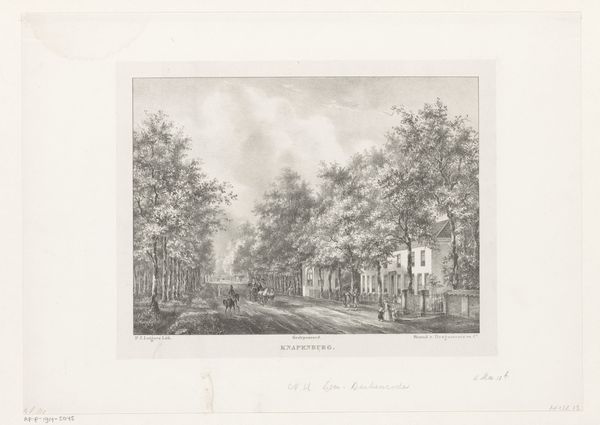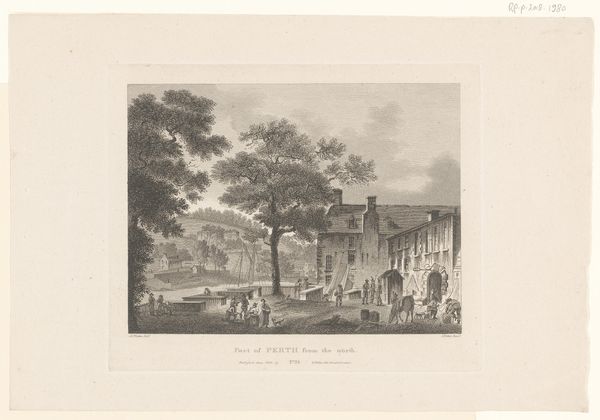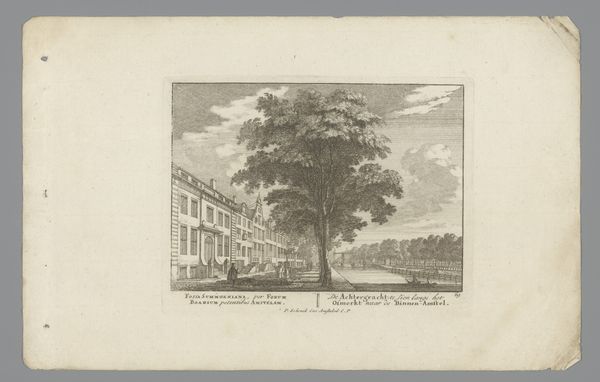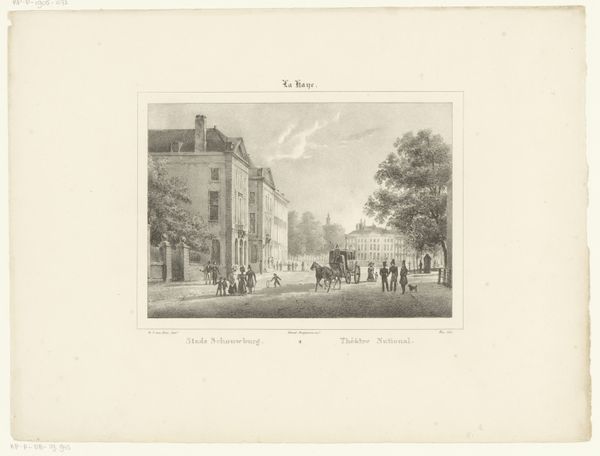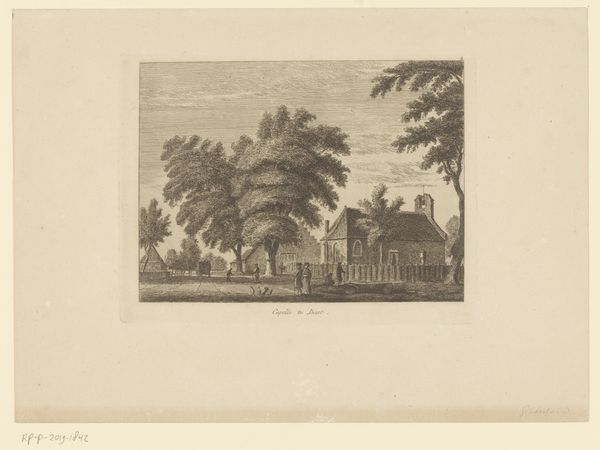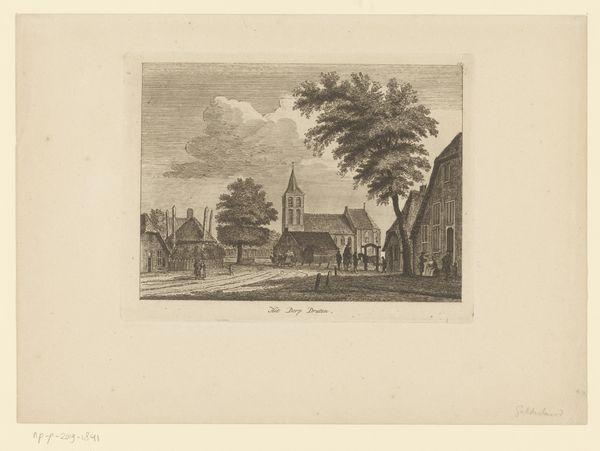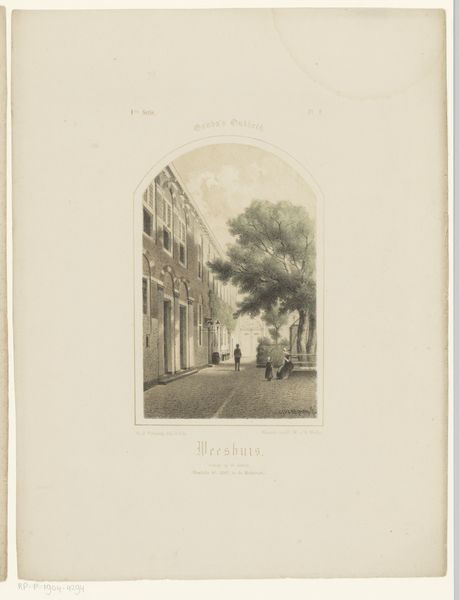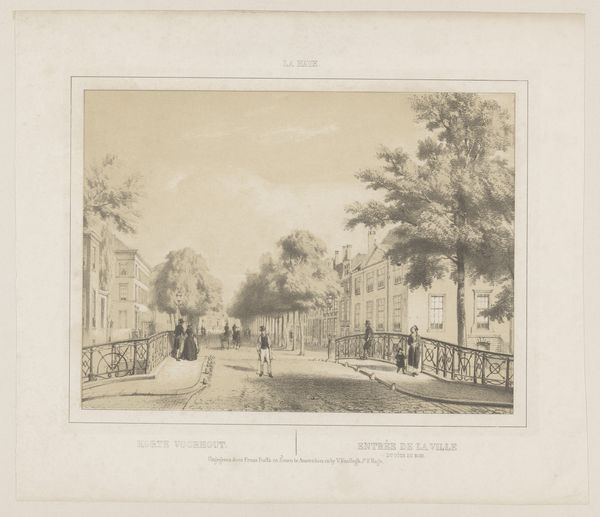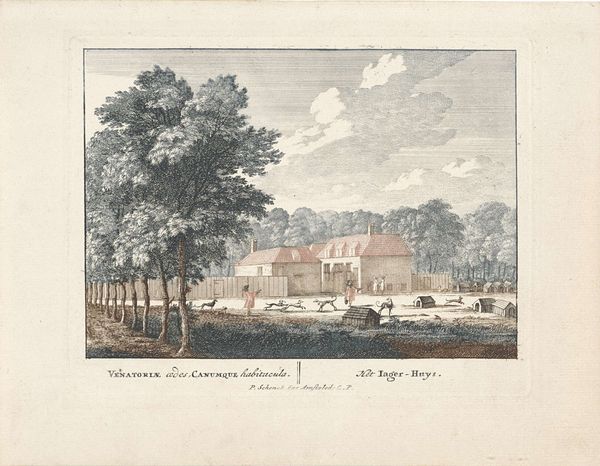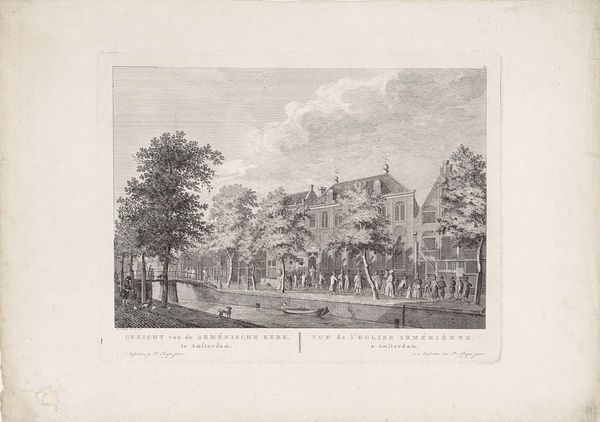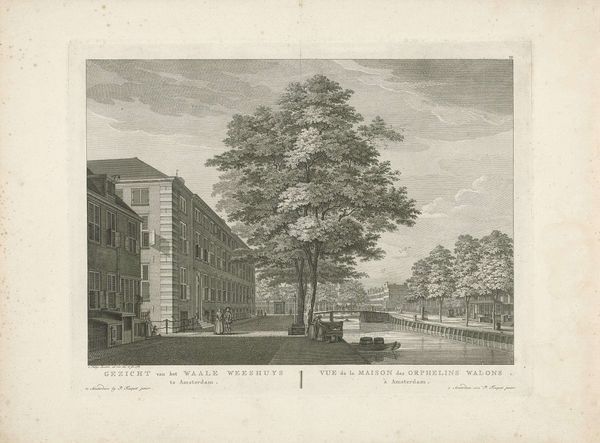
print, engraving
#
dutch-golden-age
# print
#
old engraving style
#
landscape
#
cityscape
#
engraving
Dimensions: height 198 mm, width 227 mm
Copyright: Rijks Museum: Open Domain
Editor: Here we have "Gezicht op de Herengracht te Amsterdam," a print by A. Lutz, created around 1825. It feels quite formal, almost like a stage set. What's your take? Curator: Well, the formal quality you observe can be seen as a deliberate articulation of power and privilege embedded in Amsterdam’s canal district. How do you think the artist’s choice to depict this specific location speaks to the broader social structures of the time? Editor: That’s interesting. I hadn't considered it that way. It seems a straightforward landscape. Curator: But what is foregrounded? We have this privileged view. Notice how Lutz frames the Herengracht with meticulous detail, emphasizing the architecture and even the figures occupying the space. Do you think this image merely reflects reality, or does it construct a particular narrative about the city? Editor: Construct, definitely. It’s not just documenting. The presence of people, their attire... they are participating in a designed system. Does the uniformity suggest anything? Curator: Indeed. The ordered lines of the canal, the regimented trees, and the neoclassical architecture speak to Enlightenment ideals of rationality and control. However, one could argue it also reinforces a rigid social hierarchy where access to such spaces was not universal. The image performs this idea of curated experience. Editor: So, beyond a pretty picture, it is about control and limited access? Curator: Precisely. It reflects a society where even the natural world is molded to fit a specific socio-political order. An order built upon the backs of enslaved people elsewhere, to afford such beautiful displays of privilege. It asks us to consider whose stories are amplified, and whose are deliberately obscured. Editor: I definitely see that now. It has layers that I didn’t see at first glance. Thanks! Curator: It is a potent reminder that art is never neutral. Keep asking questions and challenging the status quo!
Comments
No comments
Be the first to comment and join the conversation on the ultimate creative platform.
